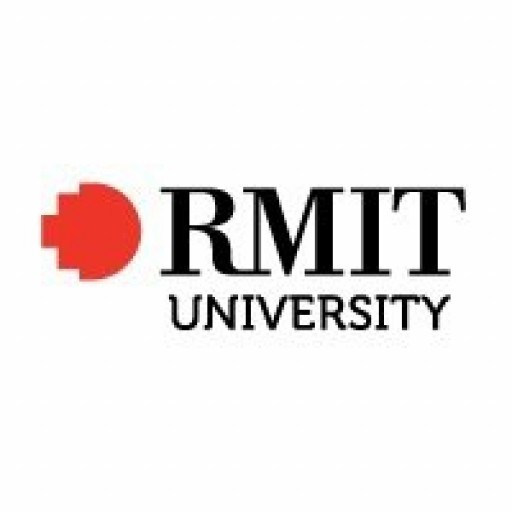Photos of university / #universityofutah
The Bachelor of Science in Geographic Information Science (GIS) at the University of Utah prepares students to become proficient in the principles and applications of spatial data collection, analysis, and visualization. This comprehensive program combines coursework in geography, computer science, and environmental sciences to equip students with the essential skills needed to address complex spatial problems across various industries. Students will learn how to manage and interpret geographic information systems, develop cartographic skills, and utilize advanced technologies such as remote sensing, GPS, and spatial data analysis software. The curriculum emphasizes both theoretical foundations and practical experience, enabling students to design and implement innovative GIS solutions in sectors like urban planning, environmental management, transportation, public health, and natural resource management. Through a combination of classroom instruction, hands-on projects, and fieldwork, students gain expertise in data collection techniques, spatial modeling, and Geographic Information System programming. The program also offers opportunities for internships and research collaborations with industry partners and government agencies, providing real-world experience and networking opportunities. Graduates of the GIS program at the University of Utah are well-prepared to pursue careers as GIS analysts, spatial data specialists, cartographers, environmental consultants, and urban planners. They are equipped to leverage spatial intelligence to inform decision-making processes, develop sustainable solutions, and contribute to technological innovation in geographic information science. With access to state-of-the-art labs and resources, students can explore emerging areas such as 3D GIS, web-based mapping, and GIS for emergency management. The program fosters critical thinking, technical proficiency, and a strong understanding of ethical considerations related to geospatial data. Graduates leave the program ready to impact a diverse array of industries and to continue their education in graduate programs related to geography, urban planning, or environmental science. The University of Utah’s GIS program is committed to preparing students for successful careers in the dynamic and expanding field of geographic information science.
A total of 36 credit hours are required to graduate. Required and elective courses are listed below. Program requirements may change depending on available course offerings.
Required Core Courses
- GEOG 6000: Adv Geographical Data Analysis (4 Hours)
- GEOG 6150: Spatial Database Design for GIS(4 Hours)
- GEOG 6160: Spatial Modeling with GIS(4 Hours)
- GEOG 6161: Capstone in GIS (3 Hours)
- GEOG 6162: Project Management (3 Hours)
- GEOG 6165: Web GIS (3 Hours)
- GEOG 6180: Geoprocessing with Python (3 Hours)
Sub-Total 24 Hours
Technical Electives
(Choose two from list below)
- GEOG 5170: GeoData Field Methods (3 Hours)
- GEOG 6010: Geocomputation (4 Hours)
- GEOG 6020: Advanced Spatial Analysis (3 Hours)
- GEOG 6110: Remote Sensing Analysis (3 Hours)
- GEOG 6120: Environmental Optics (3 Hours)
- GEOG 6130: Advanced Remote Sensing (3 Hours)
- GEOG 6190 GIS: Environmental & Public Health (3 Hours)
Sub-Total 6-7 Hours
Application Electives
(Choose two from list below)
- GEOG 5210: Global Climate Change (3 Hours)
- GEOG 5270: Global Patterns of Life (4 Hours)
- GEOG 5320: Geography of Terrorism (3 Hours)
- GEOG 5340: Disasters & Emergency Management (3 Hours)
- GEOG 5440: Global Economic Geography (3 Hours)
- GEOG 6530: Time Geography (3 Hours)
Sub-Total 6-7 Hours
Total Number of Credits 36-38
- Separate applications must be submitted in order to apply to more than one degree program
- Application fees are subject to change and ARE NOT WAIVED
- We will evaluate your file only after we receive all required fees and documents, including transcripts
- International Students only: Proof of financial responsibility is NOT needed to evaluate an applicant's file, nor is it needed to accept a student. AFTER being admitted, this information IS NEEDED prior to issuing the I-20 Certificate of Eligibility so students may obtain a student visa. (Students being funded by the Department do not need to submit an additional Financial Statement.) Current estimated expenses for graduate students are detailed here.
- A bachelor's degree from a regionally-accredited college/university,
- At least a 3.00 or higher undergraduate weighted mean GPA
- Transcripts
- GRE
- TOEFL Or IELTS. Scores must be a minimum of 80 (iBT) or 550 (pBT) for the TOEFL or a minimum band score of 6.5 for the IELTS
- Statement Of Purpose
- Letters Of Recommendation. Recommendations for Department of Geography applications will ONLY be accepted electronically via the application system. Paper recommendations will not be accepted. Three (3) recommendations from persons who are familiar with your academic abilities are required for each applicant. We encourage you to "waive the right" to see your letters since most evaluators consider confidential letters more valuable.
- Curriculum Vitae (CV)
The University of Utah offers a range of financing options for students enrolled in its Geographic Information Science (GIS) program. Undergraduate students at the university have access to various forms of financial aid, including federal and state grants, scholarships, work-study opportunities, and student loans. The university's Financial Aid Office provides comprehensive support to help students identify and secure funding sources tailored to their academic pursuits in GIS. Scholarships specifically dedicated to GIS or related fields may be available through departmental awards or university-wide scholarship programs, which require separate applications and often consider academic achievement, leadership, and community service.
Additionally, many students finance their studies through federal financial aid programs such as the Free Application for Federal Student Aid (FAFSA), which is essential for eligibility for need-based grants and loans. The university also encourages students to explore external scholarships offered by professional organizations, industry groups, and local community foundations supporting geographic and environmental sciences. Graduate students in GIS might also consider assistantship opportunities, where they can work as research or teaching assistants, earning a stipend and waiving tuition fees.
The university’s financial aid policies are designed to make education accessible, and students are advised to meet application deadlines and submit all required documentation promptly. The university aims to ensure students can focus on their academic and professional development without undue financial strain, providing resources, counseling, and planning services to maximize aid effectiveness. Overall, the financing studies at the University of Utah’s GIS program encompass a broad spectrum of institutional, federal, and external options to support student success.
The University of Utah offers a comprehensive program in Geographic Information Science (GIScience) designed to equip students with the technical skills and theoretical knowledge necessary to analyze, interpret, and manage spatial data. This interdisciplinary field combines elements of geography, computer science, cartography, and environmental science, preparing students for careers in urban planning, environmental management, transportation, and geospatial technology industries.
The program curriculum typically includes coursework in geographic information systems (GIS), remote sensing, spatial analysis, programming for geospatial applications, cartographic principles, and data visualization. Students gain practical experience through laboratory work, project development, and possibly internships with government agencies or private sector organizations specializing in spatial data services. Emphasis is placed on developing proficiency with industry-standard GIS software, such as ArcGIS and QGIS, and programming languages like Python and R for spatial data analysis.
Students pursuing a degree in Geographic Information Science at the University of Utah have access to cutting-edge research facilities and partnerships with local industries, fostering experiential learning and professional development. The program also encourages interdisciplinary collaboration, allowing students to work on real-world projects involving urban development, environmental conservation, disaster response, and natural resource management.
Graduates of this program are well-prepared for roles such as GIS analysts, spatial data managers, remote sensing specialists, cartographers, and GIS consultants. Many find employment in government agencies like the Utah Department of Natural Resources, private GIS consulting firms, environmental organizations, and academia. The program may also serve as a stepping stone for those interested in pursuing advanced degrees in geography, urban planning, or environmental science.
Overall, the University of Utah's Geographic Information Science program combines rigorous academic coursework with practical training and research opportunities, fostering the skills needed to innovate and lead in the rapidly evolving geospatial field.







